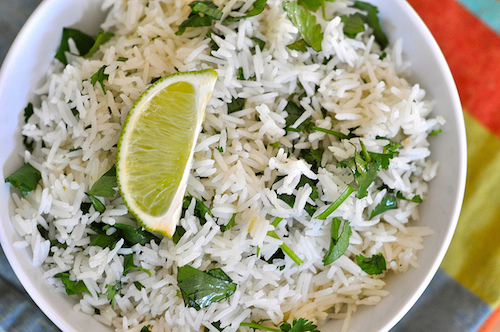Traditionally, rice has not received the same status and popularity in the Western world as other staple foods like wheat, maize or potatoes.
For millennia, rice has played a hugely integral part in the diets and lifestyles of people all over the world.
To say that rice is a popular source of food would be an understatement.
It holds the acclaim of providing a staple food for around half of the world’s population and being it’s third most cultivated food crop.
India is one of the countries in which rice forms a huge part of the national diet and economy.
As well as being the world’s second largest consumer of rice, India is also the second largest global producer of the grain, producing more than twice the amount of rice annually as the next largest producer.
The most popular and acclaimed type of rice grown and consumed in India is the long-grained basmati. For thousands of years basmati has been grown in the foothills of the Himalayas, and much like Champagne in the Champagne region of France, pure basmati is a protected product of the region.
Taken from the Sanskrit word for “fragrant” or “perfumed one,” basmati is known for its sweet aroma, soft, luxurious texture and distinctive long, curved grains. It was these very characteristics that enabled basmati rice to gain its reputation as one of the most prestigious and costly types of rice.
From the Maharajahs of India to the Shahs of Persia, basmati is a delicacy that has been enjoyed and appreciated by royalty throughout history.
Today, basmati has become much more accessible and is being enjoyed by food lovers all over the globe. Despite its less exclusive social status, the rice itself has lost neither its regal flavor or rich aroma.
One aspect that sets basmati apart from other grains is its unique aging process.
In order for the grains to obtain their unique flavour and fragrance, basmati rice has to be aged for long periods of time. The usual aging period for basmati rice is nine months, though some premium brands (such as Amira Foods), age their basmati rice for a minimum of 18 months.
Indeed, Amira rice is a company whose fortunes seem analogous to the ever increasing global popularity of basmati rice.
Founded in 1915 by the late B.D. Chanana, as a trading house, the company has grown from a small family-run business to a large multinational corporation. In 2012, Amira Foods was listed on the New York Stock Exchange, all the while being run under the helm of four successive generations of Chananas.
Basmati rice is truly a culinary delight that has been universally enjoyed from ancient Eastern palaces to its modern day audience comprised of food lovers of all nationalities and social classes. This rice can be used as the basis for a variety of delicious and versatile meals.
Here are some examples of Basmati-based meals:
Middle Eastern Clove and Cardamon Scented rice with Griddled Halloumi
A wonderful light and vegetarian suitable meal that is an excellent option for summer dining.
Prepare by adding basmati rice to a pan of caramelised red onions, garlic, cardamom pods, cooked lentils and stock and then simmer lightly for around 10 to 12 minutes.
Follow this by heating halloumi cheese over a griddle pan with a light drizzle of olive oil, until the cheese is crisp. Then, chop into small pieces and mix into the preheated rice.
Vietnamese Rice and Prawn Cucumber Salad
Heat a small amount of olive oil in a saucepan and stir fry washed and strained basmati rice until each grain has been coated in a light layer of oil.
Pour in boiling water so that it covers the rice and boil until rice has become light and fluffy.
While rice is boiling, prepare a dressing of lime juice, sesame oil, soy sauce, fish sauce and sugar with shallots, chilies, coriander and chives.
Stir fry prawns in garlic. Once the shrimp are cooked through, tip dressing into mix.
When the rice is done boiling, add to prawn salad and fork through gently.
Love elephant and want to go steady?
Sign up for our (curated) daily and weekly newsletters!
~
~
~
Apprentice Editor: Brandie Smith/Editor: Travis May
Photo: Brian Child/Flickr Creative Commons

 Share on bsky
Share on bsky







Read 0 comments and reply